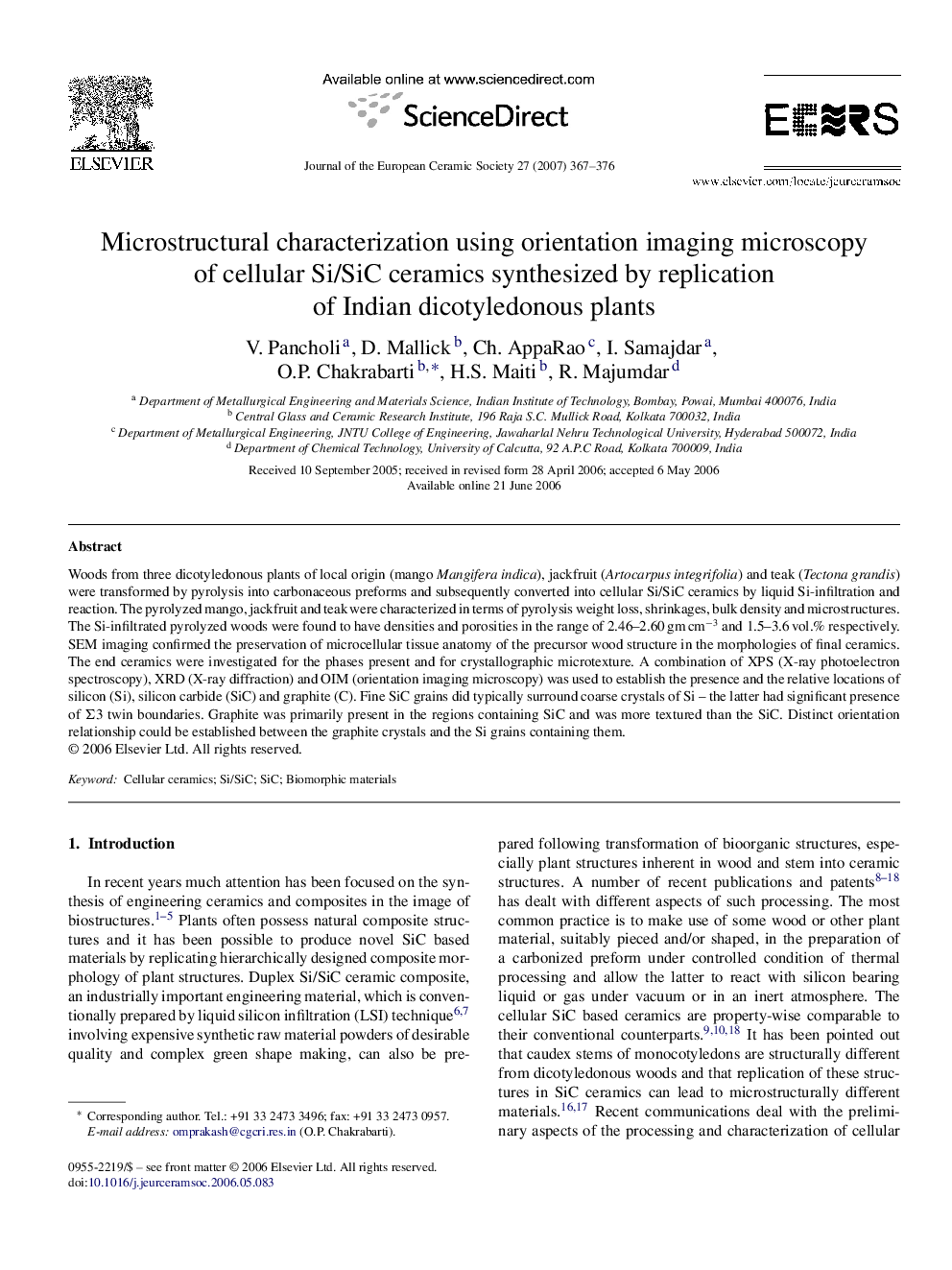| Article ID | Journal | Published Year | Pages | File Type |
|---|---|---|---|---|
| 1476991 | Journal of the European Ceramic Society | 2007 | 10 Pages |
Woods from three dicotyledonous plants of local origin (mango Mangifera indica), jackfruit (Artocarpus integrifolia) and teak (Tectona grandis) were transformed by pyrolysis into carbonaceous preforms and subsequently converted into cellular Si/SiC ceramics by liquid Si-infiltration and reaction. The pyrolyzed mango, jackfruit and teak were characterized in terms of pyrolysis weight loss, shrinkages, bulk density and microstructures. The Si-infiltrated pyrolyzed woods were found to have densities and porosities in the range of 2.46–2.60 gm cm−3 and 1.5–3.6 vol.% respectively. SEM imaging confirmed the preservation of microcellular tissue anatomy of the precursor wood structure in the morphologies of final ceramics. The end ceramics were investigated for the phases present and for crystallographic microtexture. A combination of XPS (X-ray photoelectron spectroscopy), XRD (X-ray diffraction) and OIM (orientation imaging microscopy) was used to establish the presence and the relative locations of silicon (Si), silicon carbide (SiC) and graphite (C). Fine SiC grains did typically surround coarse crystals of Si – the latter had significant presence of Σ3 twin boundaries. Graphite was primarily present in the regions containing SiC and was more textured than the SiC. Distinct orientation relationship could be established between the graphite crystals and the Si grains containing them.
